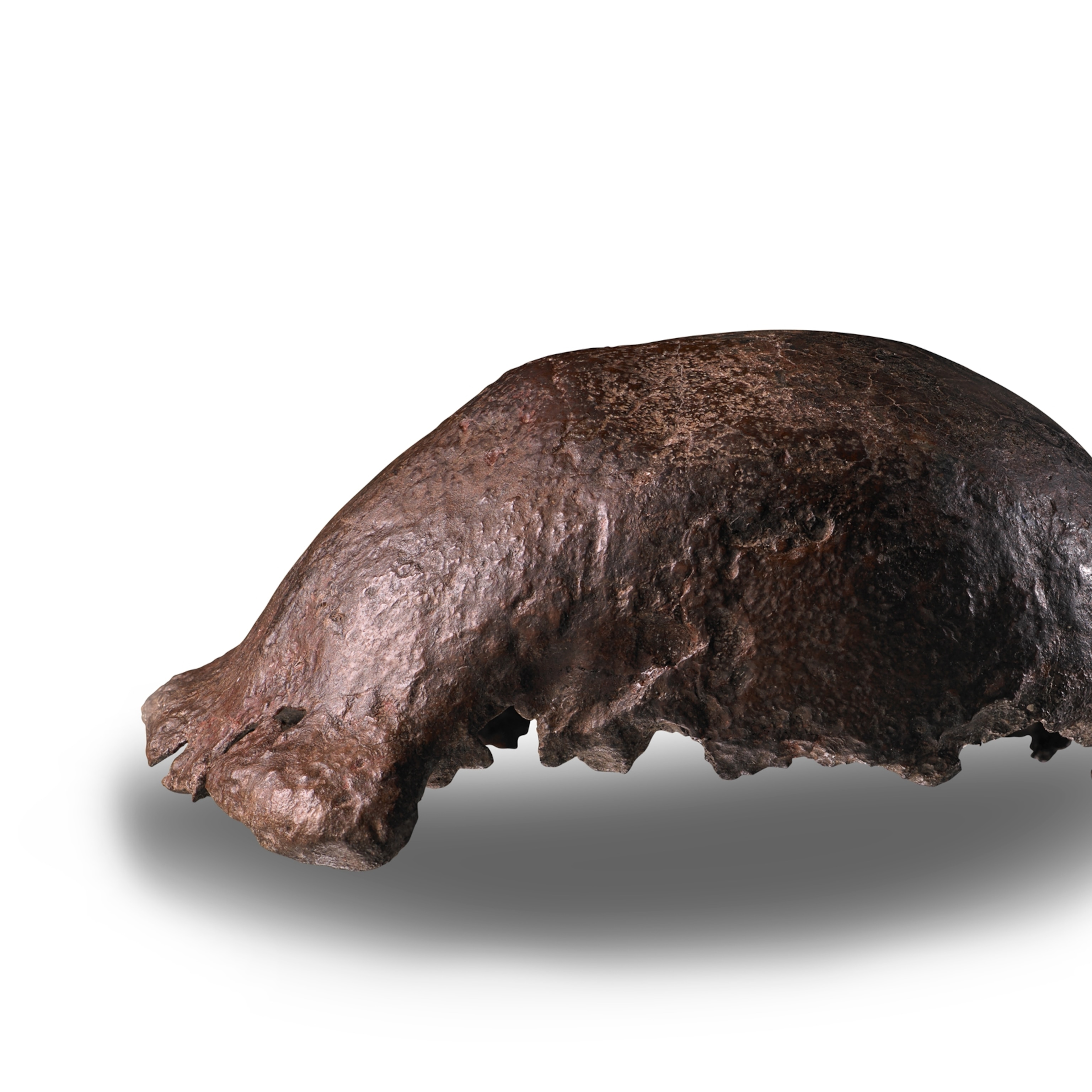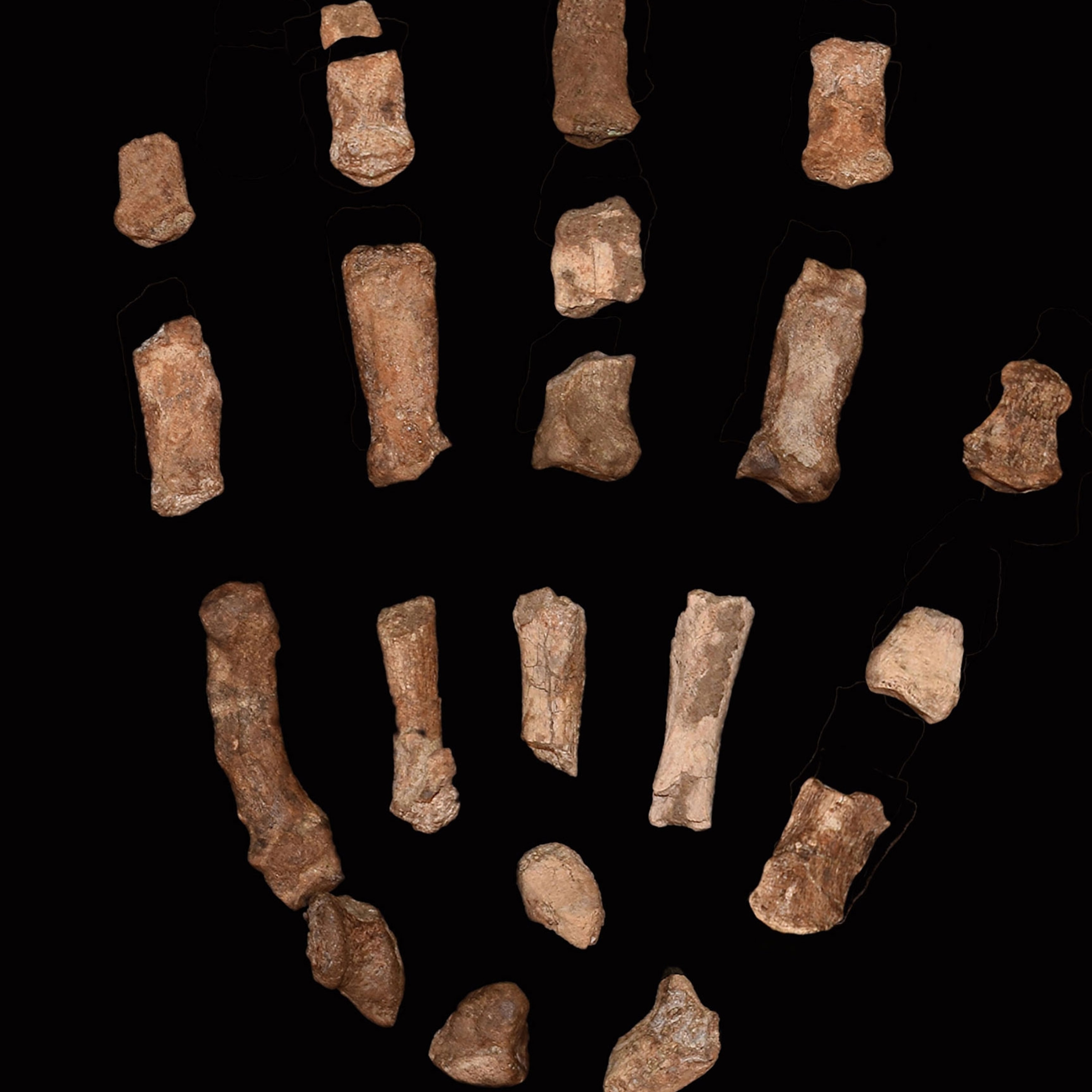One Videographer’s Journey to Find a Lost Human Ancestor
On an unremarkable day in 2013, two professional cavers decided to squeeze through a passageway in South Africa that they had never gone through before. They contorted themselves through more than 650 feet of rocky and dangerous passageways, as narrow as seven inches wide in some parts, before dropping down into a cave quite literally covered in hominin fossils. These fossils would later reveal the existence of
a new species of human ancestor that has a similar hand, foot, and skull shape to humans but with apelike shoulders and a tiny brain.Paleoanthropologist and National Geographic Explorer-in-Residence Lee Berger put together a team of six anthropologists, archaeologists, and paleontologists to retrieve these bones. Because of the seven-inch gap, it turned out that a majority of the applicants—and all of the final scientists—were women.
Garrreth Bird is a five-foot-nine adventure videographer who just so happens to be able to squeeze through that small space. His size and skill in caving allowed him to film the recovery of more than 1,550
H. naledi
fossils for the NOVA/National Geographic TV specialDawn of Humanity.
Bird was there to witness every discovery and capture it on film, which you can view in the video above. I spoke with Bird over the phone and asked him about his experiences filming this historic dig.
Read more about the discovery of H. naledi in the October issue of National Geographic.
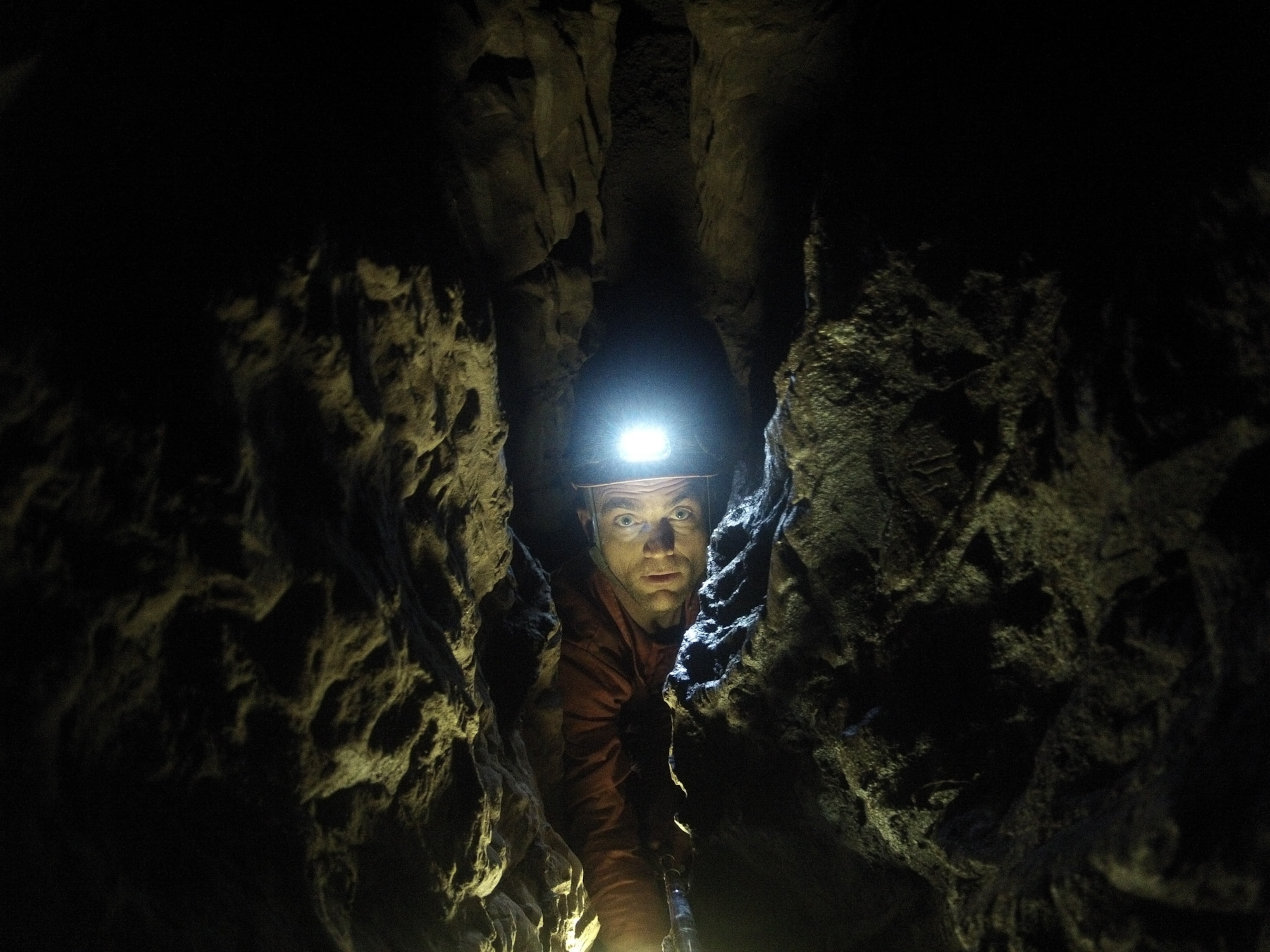
GARRRETH BIRD: I was lucky enough to be a perfect “fit” for this shoot, if you’ll excuse the pun. As a fairly compact and nimble adventure videographer and photographer I have done a lot of work shooting quite wild stuff—including a lot of rock climbing. The National Geographic team had to find someone who was professionally capable of the task but also someone who was comfortable working in difficult and rather extreme circumstances and who could also fit through a gap of 18 centimeters [seven inches]. They were satisfied that I was the right person. Not long after that, I was en route to the Cradle of Humankind.
KATHRYN: What was it like entering the cave?
GARRRETH: My being there was entirely premised upon the fact that I could make it through the 18-centimeter squeeze into the final chamber, so there was an element of uncertainty and slight nervousness as to whether I would actually be able to do it.
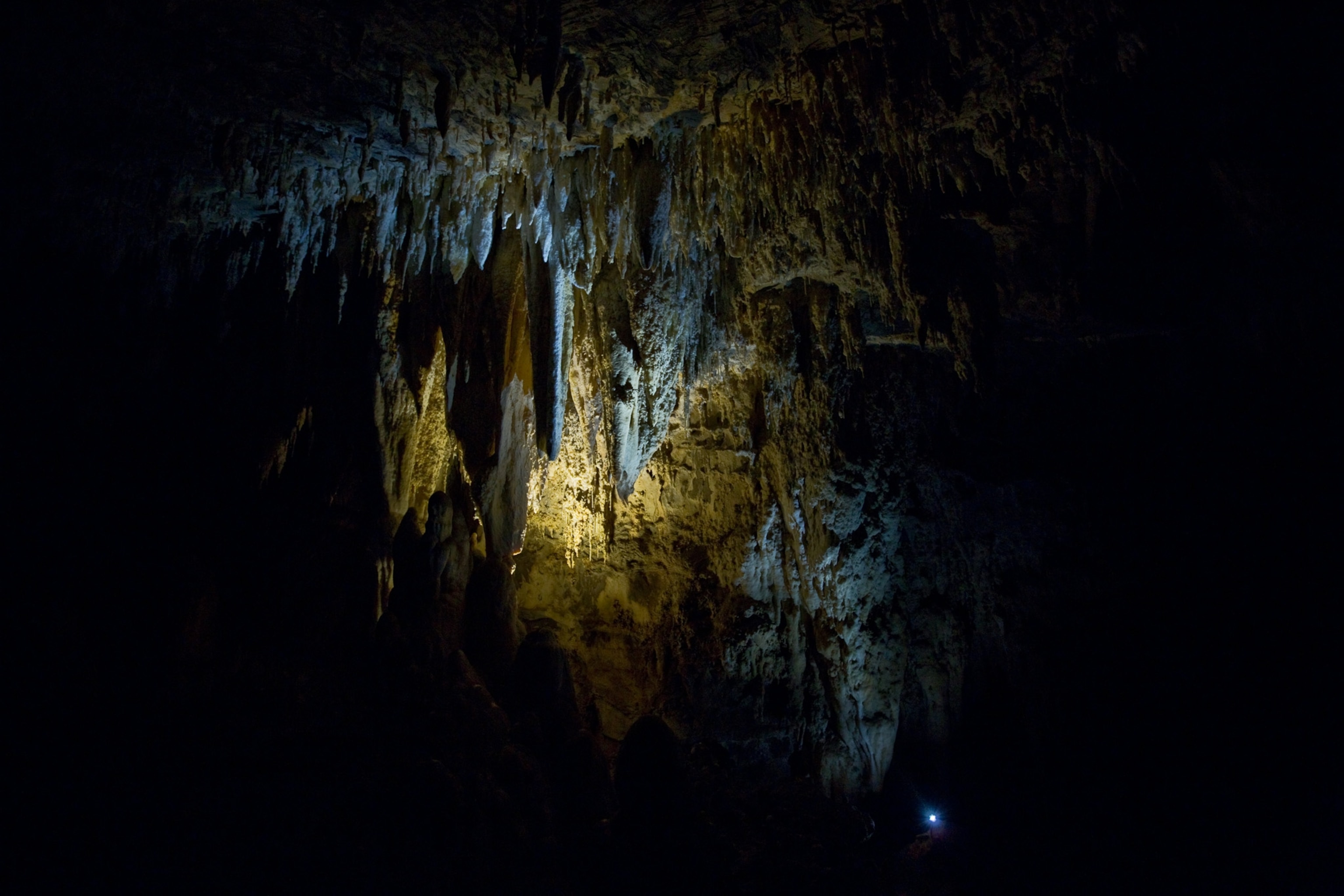
KATHRYN: What was the final chamber like? Describe it for me.
GARRRETH: Caves are quite magical to me. They’re like little secretive passages that only a few adventurous people get to go down. Every time your headlight pans around it picks up these little sparks, grooves of crystals, weird stripes—it’s really quite a feast for your eyes.
You’re in a place where the ambient light feels like it’s negative, it’s completely dark. You breathe in this musty, dank smell all day, and it becomes slightly oppressive. There’s so much dust, and you’re constantly crawling around the ground, so you feel quite literally covered in cave.
After a while you develop this love-hate relationship with the cave. You feel like you’ve unlocked this funky little key, getting through this one passageway. But, then again, you hate it because you bash your knee or eat a mouthful of dust. You start to view this cave as a friend whose behavior you’re not so fond of.
KATHRYN: Was it difficult to film in the cave? What are some of the challenges you faced?
You May Also Like
GARRRETH: I don’t think I’ve ever shot in a more difficult environment. The cave itself is 30 meters [98 feet] underground vertically, but it’s about 200 meters [656 feet] distance to get from the entrance to the actual final chamber. Two hundred meters sounds like a short distance, but it’s not a normal 200 meters. Every part of the descent is hugely complicated and very narrow. I had to make sure my (camera) kit and I could fit through there. I went with a Canon 5D Mk III [digital SLR] because you can take everything apart and put it back together again.
You have to be constantly aware of your environment, because these fossils are priceless. There were only certain places I was allowed to walk because it was a fossil-rich ground. So to get a different angle I had to shimmy up stalactites. I had to be exceedingly careful not to drop any of my equipment onto the scientists or fossils below. God forbid—it wasn’t even an option.
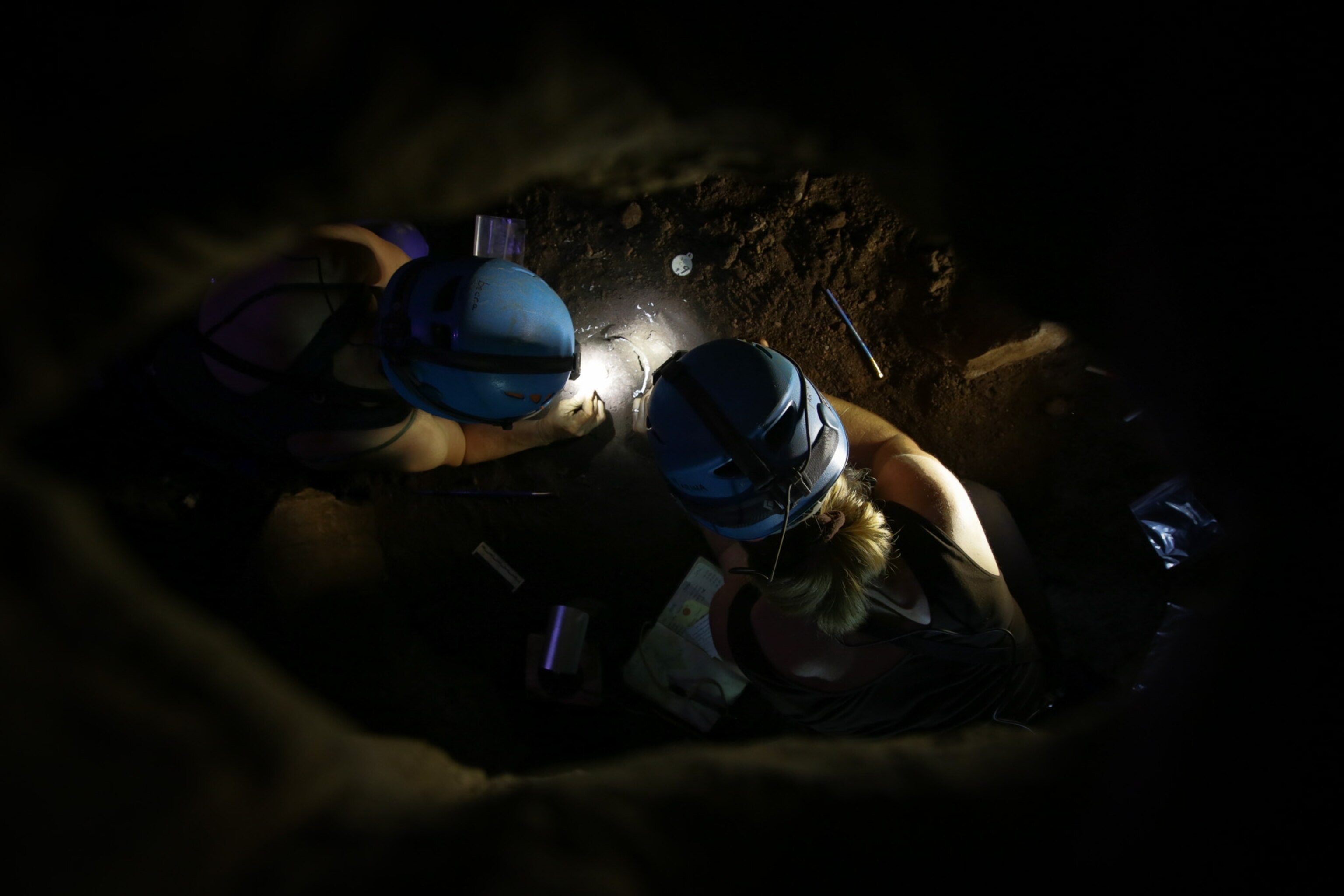
KATHRYN: Did anything surprising happen when you were down there?
GARRRETH: I actually did find a fossil. I spent quite a lot of my time clambering up the walls of the chamber in order to get different shots. In one of these cases I scraped away some sand and there was a little fossil. It was quite cool to discover, because it wouldn’t have easily been found if I wasn’t trying to keep out of the way of the scientists.
KATHRYN: What was it like working so closely with the [scientists] in the cave?
GARRRETH: It was like being an apprentice detective, with these ladies telling me what each little element might indicate in terms of the part of the body or the age of the creature or extra bits of evidence like food in the teeth. They were able to tell from basic fragments whether there might be more than one [hominin] or not. They take their work very seriously—as do I—but we were actually having a lot more fun than we should’ve, considering the gravity of what we were doing.
There were so many fossils around that a few times I managed to catch the actual moment of discovery. I did have to ask the ladies to perhaps tone down the language that they were using to express exactly how happy they were. There’s sentences where the F-word happens like ten times.
I finally had to say to them, “Look, I think this is hilarious, but I have a feeling that it is going to make this thing rather difficult to edit. And if any of these shots don’t get into (the TV show) because of all the bleeping that has to be put overtop, you’re going to make me grumpy.”
KATHRYN: How did it feel to be one of the first people to see these bones in millennia?
GARRRETH: I was fully aware of the implications of the find, should it turn out to be what everybody hoped it would be. But what was incredible for me was being so close and getting to spend so much time with something that was potentially so special. And the cherry on the top was being present when they were stumbling upon these fossils, live, in the flesh, right before my eyes. It wasn’t some re-creation, and that was a really special experience to have.
website
Learn more about this incredible discovery in the October issue of National Geographic.

